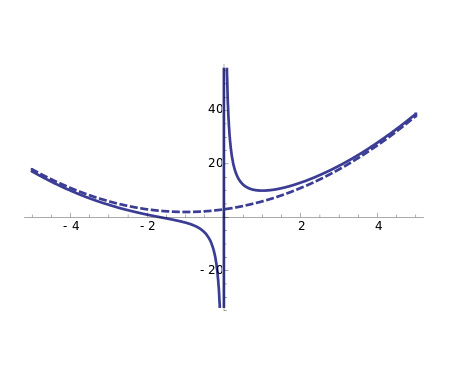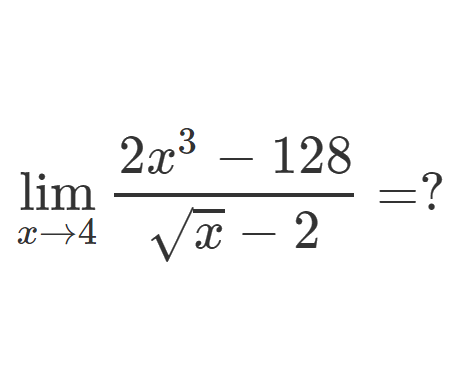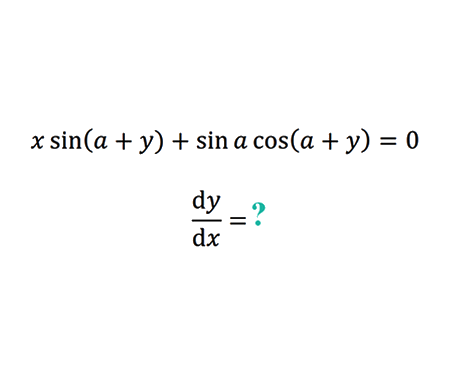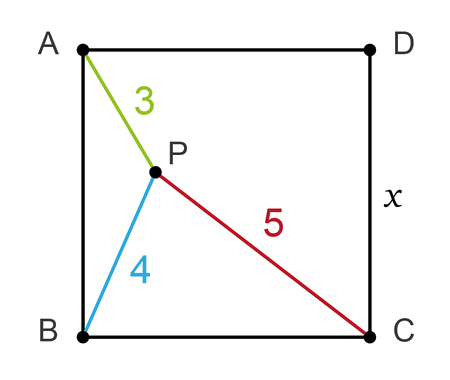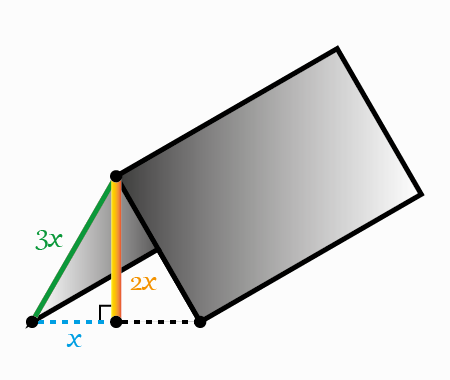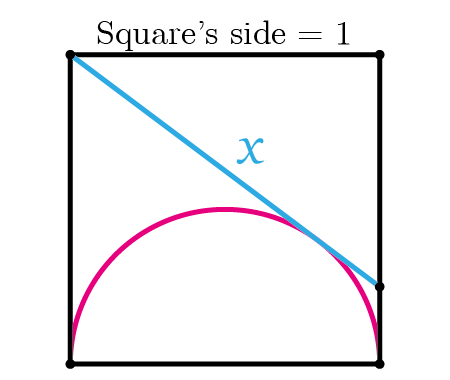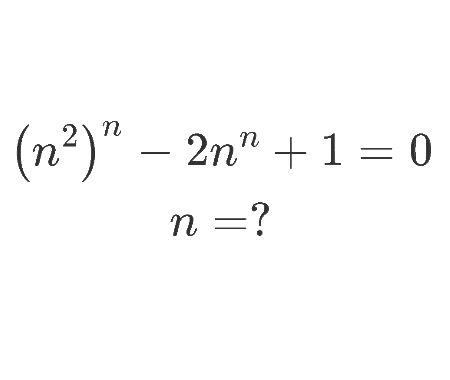Solve the quintic equation for real \(x\)
Home -> Solved problems -> Solve quintic equation
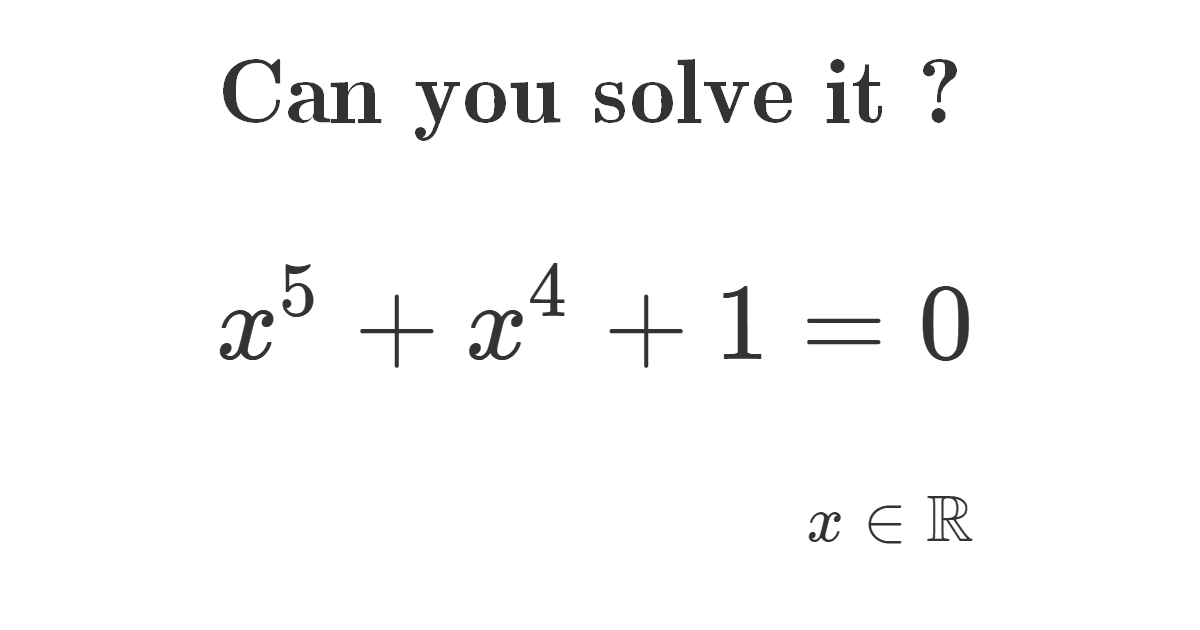
Solution
We want to find the real solutions of the quintic equation : \(x^{5}+x^{4}+1=0\)
\[\begin{aligned}
&T(x)=x^{5}+x^{4}+x^{3}+x^{2}+x+1 \\\\
&= x^{3}\left(x^{2}+x+1\right)+1\left(x^{2}+x+1\right) \\\\
&=\left(x^{2}+x+1\right)\left(x^{3}+1\right)\\\\
&x^{5}+x^{4}+1=0 \\\\
&x^{5}+x^{4}+x^{3}+x^{2}+x+1-x^{3}-x^{2}-x=0 \\\\
&T(x)-x^{3}-x^{2}-x=0 \\\\
&\left(x^{2}+x+1\right)\left(x^{3}+1\right)-x\left(x^{2}+x+1\right)=0 \\\\
&\left(x^{2}+x+1\right)\left(x^{3}-x+1\right)=0
\end{aligned}\]
The quadratic equation \(x^{2}+x+1=0\) has no solutions for real \(x\), we just need to solve the cubic equation \(x^{3}-x+1=0\)
note Cardano’s method : \[\color{olive} {
\begin{aligned}
&x^{3}+p x+q=0 \\\\
&x=\sqrt[3]{\frac{-q}{2}+\sqrt{\frac{q^{2}}{4}+\frac{p^{3}}{27}}} +\sqrt[3]{\frac{-q}{2}-\sqrt{\frac{q^{2}}{4}+\frac{p^{3}}{27}}}
\end{aligned}
}\]
\(x^{3}-x+1=0\) we have \(p=-1\) and \(q=1\)
\[\begin{gathered}
x=\sqrt[3]{\frac{-1}{2}+\sqrt{\frac{1}{4}-\frac{1}{27}}}+\sqrt[3]{\frac{-1}{2}-\sqrt{\frac{1}{4}-\frac{1}{27}}}\\\\
\approx-1.32
\end{gathered}\]
Home -> Solved problems -> Solve quintic equation
Every problem you tackle makes you smarter.
↓ Scroll down for more maths problems↓
↓ ↓
↓ ↓
↓ ↓
Prove that the function \(f(x)=\frac{x^{3}+2 x^{2}+3 x+4}{x}
\) has a curvilinear asymptote \(y=x^{2}+2 x+3\)
Why does the number \(98\) disappear when writing the decimal expansion of \(\frac{1}{9801}\) ?
↓ ↓
↓ ↓
↓ ↓
↓ ↓
↓ ↓
↓ ↓
↓ ↓
↓ ↓
↓ ↓
↓ ↓
↓ ↓
↓ ↓
if we draw an infinite number of circles packed in a square using the method shown below, will the sum of circles areas approach the square's area?
↓ ↓
↓ ↓
↓ ↓
↓ ↓
↓ ↓
Home -> Solved problems -> Solve quintic equation














